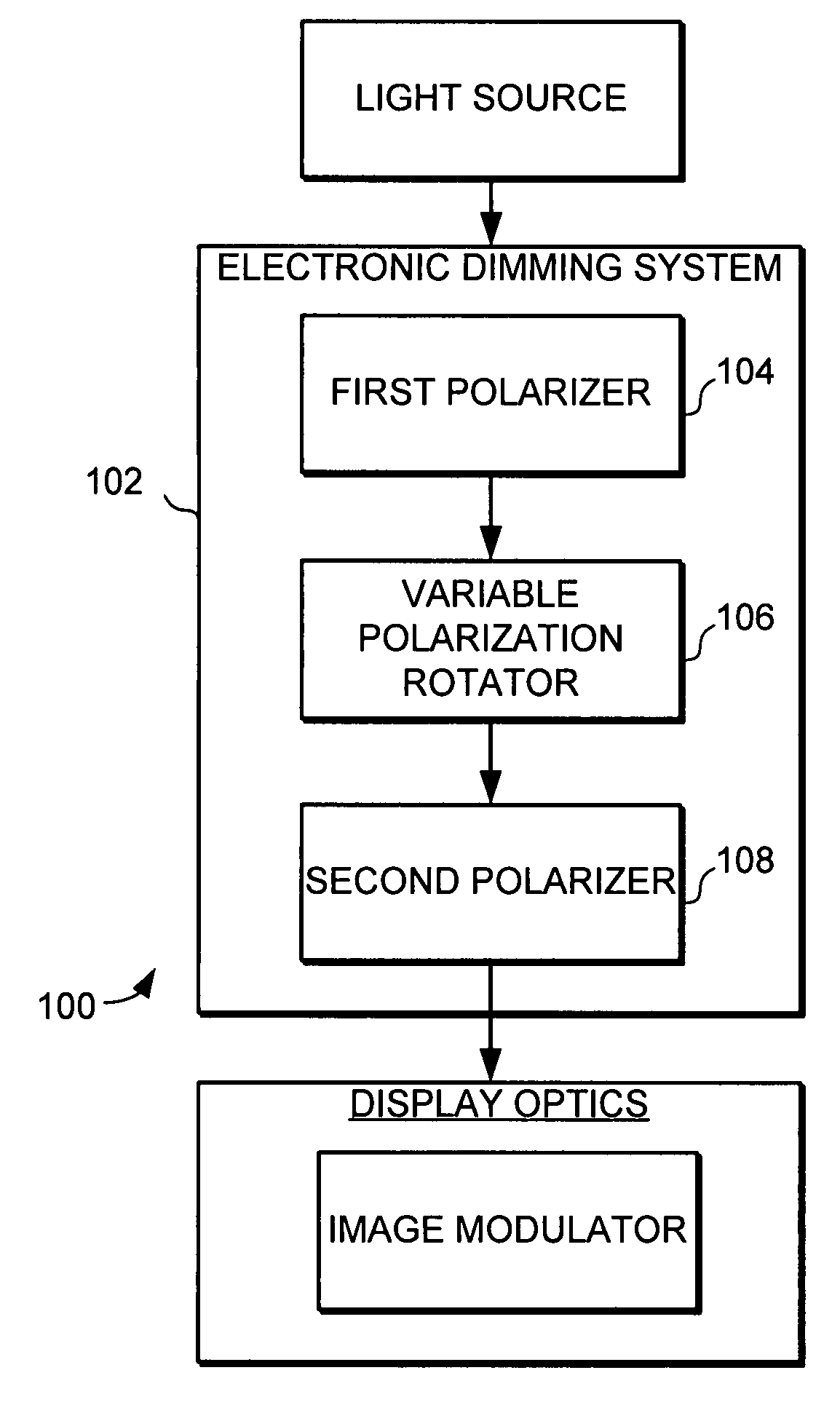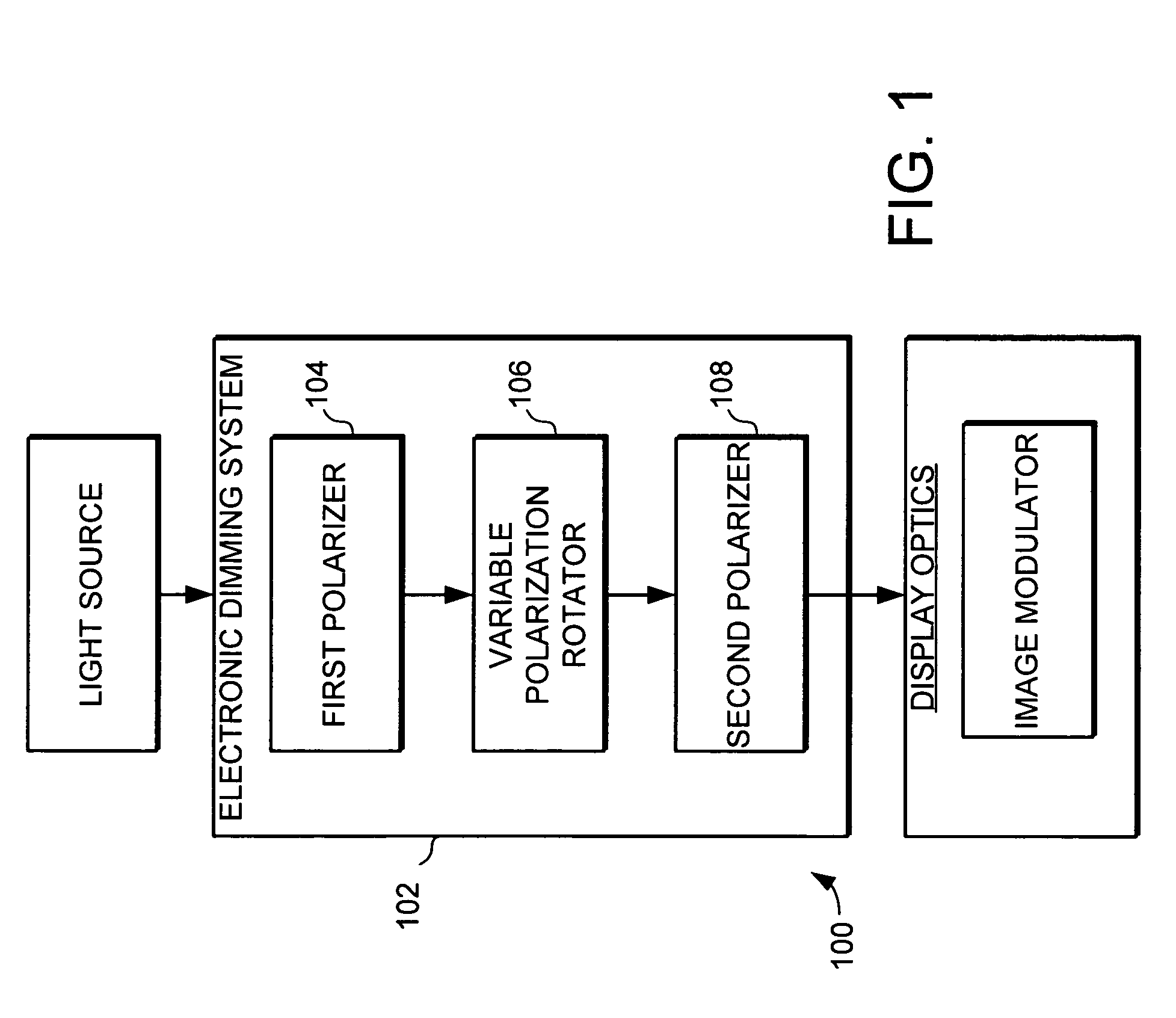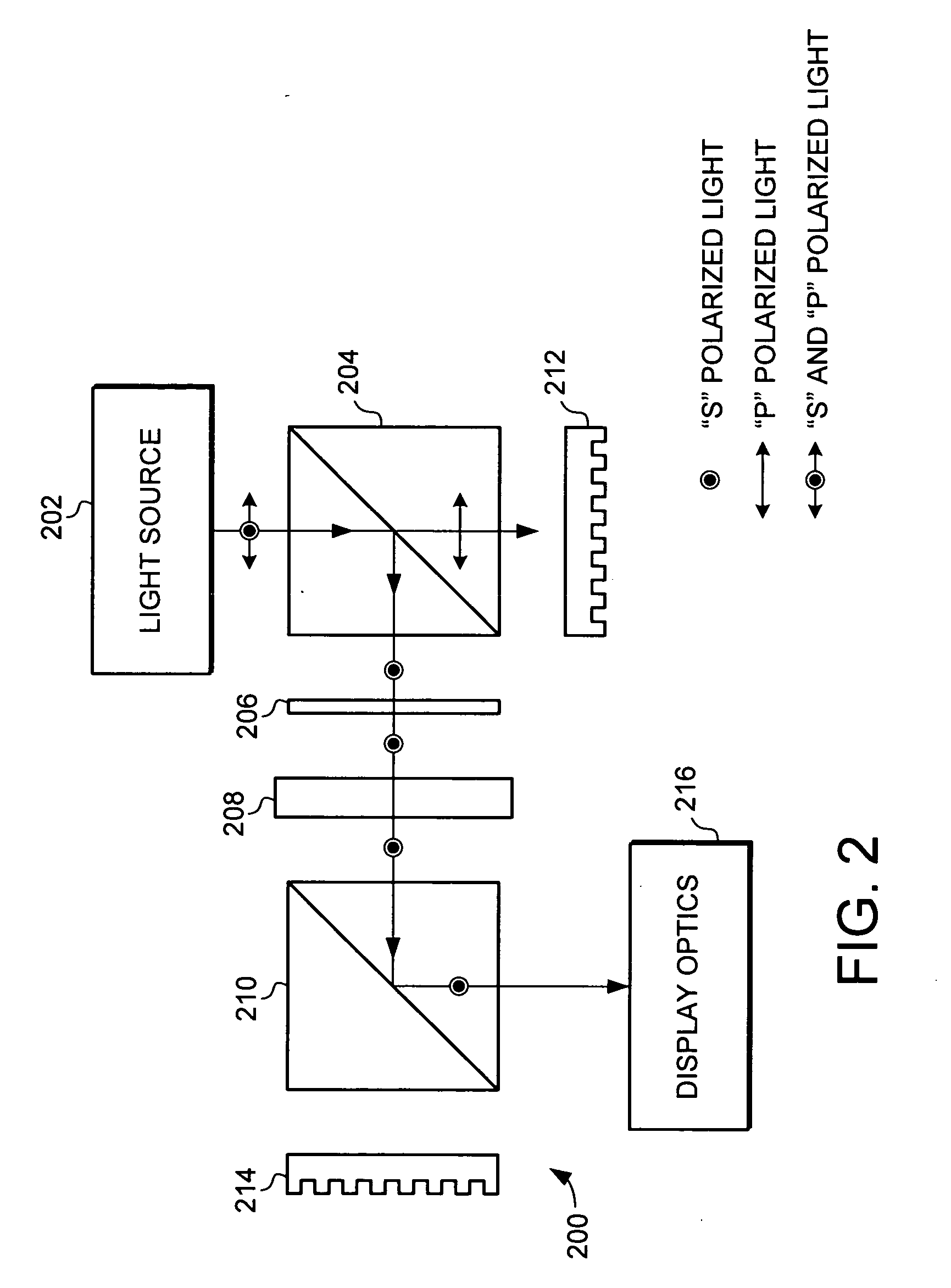Electro-optical dimming system
- Summary
- Abstract
- Description
- Claims
- Application Information
AI Technical Summary
Benefits of technology
Problems solved by technology
Method used
Image
Examples
first embodiment
[0021] In a first embodiment, the first polarizer and the second polarizer comprise non-absorbing polarizers and the dimming system further includes a heat absorber. In this specification, a non-absorbing polarizer is defined as a polarizer that does not use absorption as its primary means of polarization. One type of non-absorbing polarizer is a reflective polarizer such as a polarizing beam splitter. Polarizing beam splitters are polarizers that separate the different polarizations of light spatially. Another type non-absorbing polarizer is a scattering polarizer. Another type non-absorbing polarizer is a birefringent refractive polarizer. Another example of non-absorbing polarizers are polarization converters that convert light to desired polarization. A polarization converter may include one or more of the other types of polarizers. Likewise, an absorbing polarizer is one that uses absorption as its primary means of polarization. Examples of absorbing polarizers include typical ...
third embodiment
[0024] In a third embodiment, the variable polarization rotator comprises a pair of variable polarization rotators selected and configured to have substantially opposite angular variation. Like the other embodiments, this embodiment provides the ability to control the amount of light passed to the display by selectively rotating the polarization of the light with the pair of variable polarization rotator. However, in this embodiment a pair of rotators are used that have substantially opposite angular variation. By using such a pair of rotators, angular variation caused by one rotator can be substantially cancelled by the angular variation in the other rotator. The image quality is improved by providing improved angular uniformity in the light output of the dimmer. Thus, this embodiment is able to precisely control the amount of light passed to the display while providing a light source with improved angular uniformity.
[0025] Turning now to FIGS. 2 and 3, a first exemplary embodiment...
PUM
 Login to View More
Login to View More Abstract
Description
Claims
Application Information
 Login to View More
Login to View More - R&D
- Intellectual Property
- Life Sciences
- Materials
- Tech Scout
- Unparalleled Data Quality
- Higher Quality Content
- 60% Fewer Hallucinations
Browse by: Latest US Patents, China's latest patents, Technical Efficacy Thesaurus, Application Domain, Technology Topic, Popular Technical Reports.
© 2025 PatSnap. All rights reserved.Legal|Privacy policy|Modern Slavery Act Transparency Statement|Sitemap|About US| Contact US: help@patsnap.com



